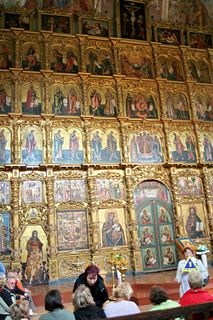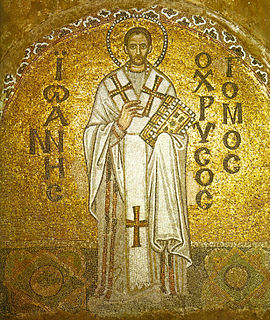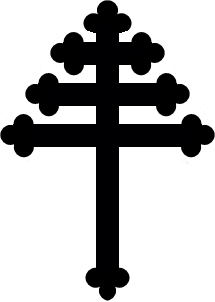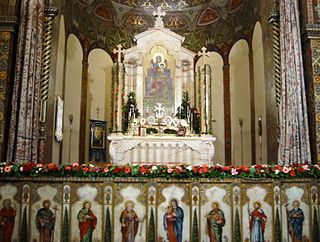It has been requested that the title of this article be changed to Liturgy of Saint John Chrysostom . Please see the relevant discussion. The page should not be moved unless the discussion is closed; summarizing the consensus achieved in support of the move. |
This article needs additional citations for verification .(July 2016) (Learn how and when to remove this template message) |
The Divine Liturgy of Saint John Chrysostom is the most celebrated divine liturgy in the Byzantine Rite. It is named after its core part, the anaphora attributed to Saint John Chrysostom, Archbishop of Constantinople in the 5th century.

The Byzantine Rite, also known as the Greek Rite or Constantinopolitan Rite, is the liturgical rite used by the Eastern Orthodox Church, the Greek/Byzantine Catholic churches, and in a modified form, Byzantine Rite Lutheranism. Its development began during the fourth century in Constantinople and it is now the second most-used ecclesiastical rite in Christendom after the Roman Rite.

The Anaphora is the most solemn part of the Divine Liturgy, or the Holy Sacrifice of the Mass, during which the offerings of bread and wine are consecrated as the body and blood of Christ. This is the usual name for this part of the Liturgy in Greek-speaking Eastern Christianity. In western Christian traditions which have a comparable rite, the Anaphora is more often called the Roman Canon in the Latin liturgy, or the Eucharistic Prayer for the three additional modern anaphoras. When the Roman Rite had a single Eucharistic Prayer, it was called the Canon of the Mass.

Saint John Chrysostom, Archbishop of Constantinople, was an important Early Church Father. He is known for his preaching and public speaking, his denunciation of abuse of authority by both ecclesiastical and political leaders, the Divine Liturgy of Saint John Chrysostom, and his ascetic sensibilities. The epithet Χρυσόστομος means "golden-mouthed" in Greek and denotes his celebrated eloquence. Chrysostom was among the most prolific authors in the early Christian Church, exceeded only by Augustine of Hippo in the quantity of his surviving writings.
It reflects the work of the Cappadocian Fathers to both combat heresy and define Trinitarian theology for the Christian Church. This liturgy was probably used originally by the School of Antioch (John having been a deacon and priest in Antioch) and, therefore, most likely developed from West Syriac liturgical rites. In Constantinople, it was refined and beautified under John's guidance as Archbishop (398–404). As a divine liturgy of the Church of Holy Wisdom, Hagia Sophia, it became over time the usual divine liturgy in the churches within the Byzantine Empire. Just two divine liturgies (aside from the presanctified), those of Saints John and Basil the Great, became the norm in the Byzantine Church by the end of the reign of Justinian I. [1] After the Quinisext Council and the liturgical reforms of Patriarch Theodore Balsamon, the Byzantine Rite became the only rite in the Eastern Orthodox Church, remaining so until the 19th and 20th Century re-introduction by certain jurisdictions of Western Rites.

The Cappadocian Fathers, also traditionally known as the Three Cappadocians, are Basil the Great (330–379), who was bishop of Caesarea; Basil's younger brother Gregory of Nyssa, who was bishop of Nyssa; and a close friend, Gregory of Nazianzus (329–389), who became Patriarch of Constantinople. The Cappadocia region, in modern-day Turkey, was an early site of Christian activity, with several missions by Paul in this region.
The School of Antioch was one of the two major centers of the study of biblical exegesis and theology during Late Antiquity; the other was the Catechetical School of Alexandria. This group was known by this name because the advocates of this tradition were based in the city of Antioch, one of the major cities of the ancient Roman Empire.

The West Syriac Rite or West Aramean Rite, also called Syro-Antiochian Rite, is an Eastern Christian liturgical rite that uses the Divine Liturgy of Saint James in the West Syriac dialect. It is one of two main liturgical rites of Syriac Christianity. It is chiefly practiced in the Syriac Orthodox Church and churches related to or descended from it. It is part of the liturgical family known as the Antiochian Rite, which originated in the ancient Patriarchate of Antioch. It has more anaphoras than any other rite.









